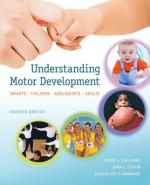|
This section contains 787 words (approx. 3 pages at 300 words per page) |

|
The skeletal and muscular systems are taught as individual subjects in traditional anatomy courses. However, they are intimately linked in both function and development. Early in development, the skeletal system is formed by cartilage. This embryonic structure is often labeled as a template from which bone cells deposit and maintain the health of growing bones. In turn, muscle cells have a completely different mode of development. Eventually, it is the action and growth of both systems that contribute to the formation of each other.
At first glance, bone may appear to be anything but a tissue. It is, however, a connective tissue complete with cells, fibers, and ground substance (minerals that make crystalline structures). Early in the growth process, osteogenic (osteoprogenitor) cells form from embryonic mesenchyme tissue. They are found in the endosteum and lie within the Haversian (central) canals...
|
This section contains 787 words (approx. 3 pages at 300 words per page) |

|


